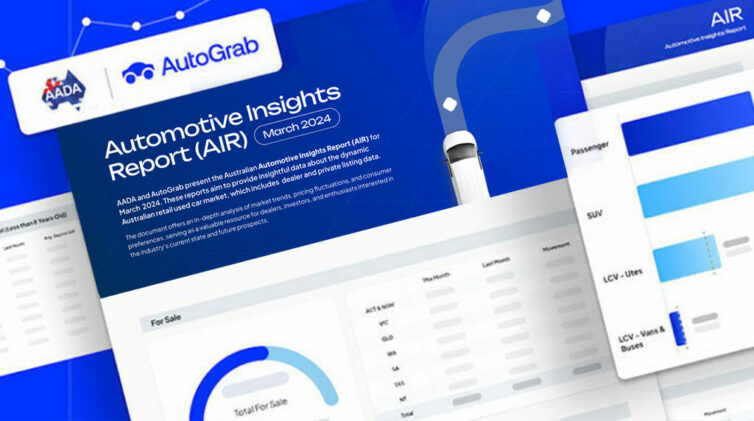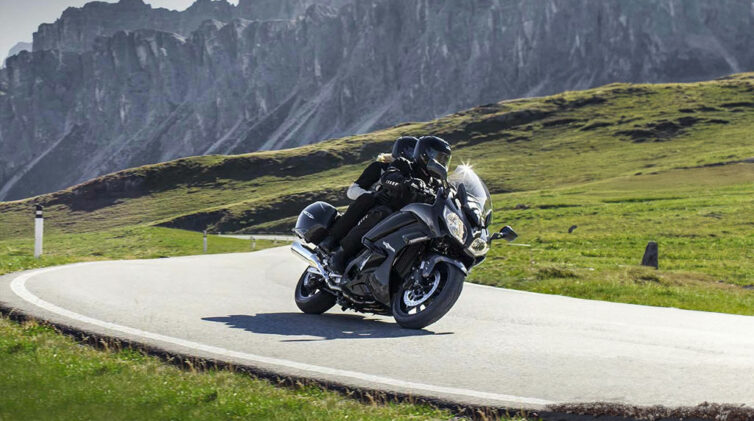The head of the German prestige brand’s Australian subsidiary, Vikram Pawah, recently revealed that such concerns had already been raised at the company, but said internal research and anecdotal evidence shows that the two vehicles appeal to different needs within the large luxury SUV sphere.
“The answer to (this question of cannibalising sales) is: Do people buy on price or do people buy on product? For me, people buy on product. I think X7 and X5 have totally different product characteristics. It’s an entirely different product,” Mr Pawah said.
“I’ve had this question from customers … When we initially started talking about the X7, they said they wanted to look at the X7 before buying an X5. And when they eventually looked at the X7, they said: ‘No, I still like the X5’ – and the person looking for an X7 said: ‘The X7 is the product for me.’ So, it’s a completely different product character we’re talking about.”
The seven-seat X7 officially entered showrooms last month in two diesel-powered variants – the xDrive30d priced from $119,900 plus on-road costs, and M50d from $168,900 – while the fourth-generation X5 launched late last year with the same powertrains priced from $112,990 and $149,900 respectively.
With the optional third row on X5 adding $3700, there is only $3210 separating the two SUVs at the entry level, while the difference between the range-topping models stands at $15,300.
We note that a petrol-powered X5, the 40i, has since joined the range, the first examples arriving in dealerships in March priced from $115,990.
BMW is clearly banking on the X7 winning incremental sales in the upper-large luxury ($100,000+) SUV segment and the X5 going from strength to strength in the large luxury ($70,000+) SUV class, in which it is the longstanding leader.
In its first full month on sale – May – the X7 recorded a healthy 152 sales, placing it miles ahead of its main rivals which include the Audi Q8 (44), Range Rover (36), Lexus LX (34) and, perhaps most notably, the Mercedes GLS, which did not trouble the scorers last month but was the benchmark in class last year with 956 sales for the full 12 months.

Seven up: BMW sees a ‘completely different product character’ in the new X7 flagship SUV compared to the longstanding X5.
Another month like this and X7 will lead the pack for year-to-date sales and will be well on its way to 1000-plus units for the year, unless sales taper off after the initial demand from the market.
Importantly for BMW, the X5 also had a very merry month of May, posting 304 sales which marked a 1.7 per cent increase over the corresponding month last year – and placed it more than 100 units clear of its nearest rival, the Range Rover Sport (200), and other contenders including the Lexus RX (199), VW Touareg (152), Porsche Cayenne (144), Volvo XC90 (86), Mercedes GLE (64) and Audi Q7 (30).
For the year to date, the X5’s 1413 sales are running 18.8 per cent ahead of where it was at the same point last year, and leading the segment with a 23.5 per cent share.
Indeed, the X5 has been a dominant force ever since the first generation arrived in 2000, taking outright honours in the luxury SUV class when the category was created in 2003 and never once losing its grip on the segment since then, even as the industry classifications changed.
The last time Mercedes-Benz was out in front was with the M-Class (as the GLE was previously known) in 2002.
Little wonder that BMW Group Australia has no intention of letting this slip, even with the X7 now on board, as the company’s head of product and market planning, Brendan Michel, made it clear at the X5’s launch late last year.
“We definitely expect it to remain segment leader,” he said at the time. “It’s next level … it’s the whole new next generation.”
Measuring in at nearly 5.2 metres long, 2.0m wide and 1.8m tall, the X7 is larger than the X5 and sits on a 3.1m wheelbase that is some 130mm longer in order to accommodate the standard third-row seating.
Both share BMW’s Cluster Architecture that underpins all late-model longitudinal-engined models released since 2015.
The X5 and X7 xDrive30d share the same 3.0-litre inline six-cylinder turbo-diesel engine, producing 195kW of power and 620Nm of torque, although the X5’s 0-100km/h sprint of 6.5 seconds is 0.5s quicker than the corresponding X7.
The M50d variants are powered by a 294kW/760Nm quad-turbo version of the B57-series unit, with the X5 version reaching 100km/h from standstill in 5.2s – 0.2s ahead of its bigger brother.
Both powertrains employ a ZF eight-speed torque-converter automatic to send torque to all four wheels.
The X5 is built in Spartanburg South Carolina, while the X7 comes from Greer some 25km or so away in the same state in the USA.
By Byron Mathioudakis and Terry Martin


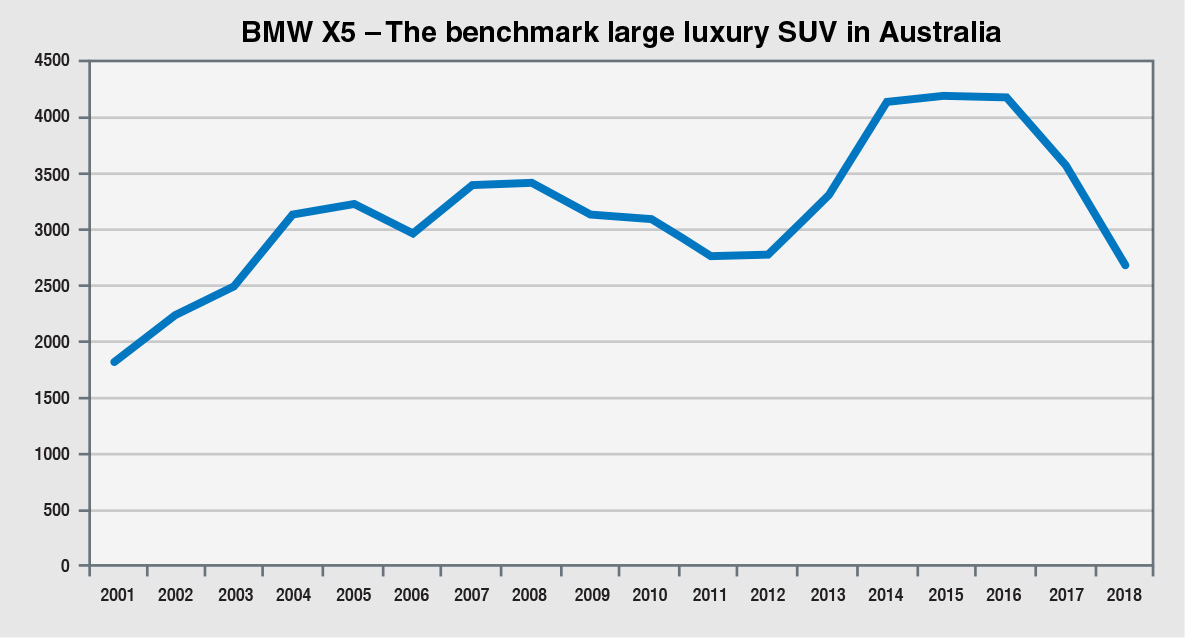
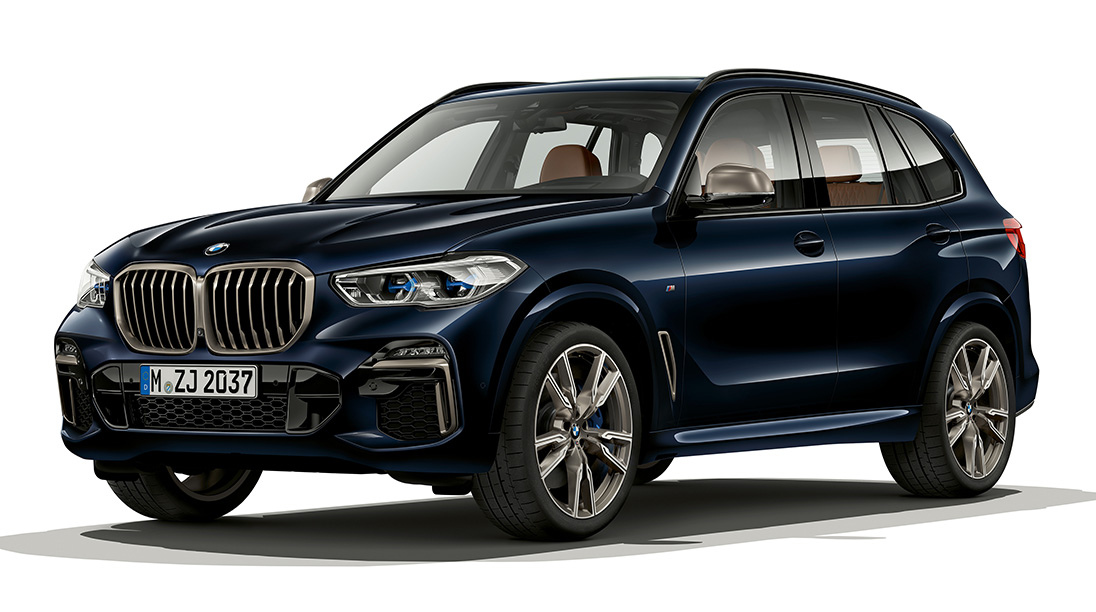
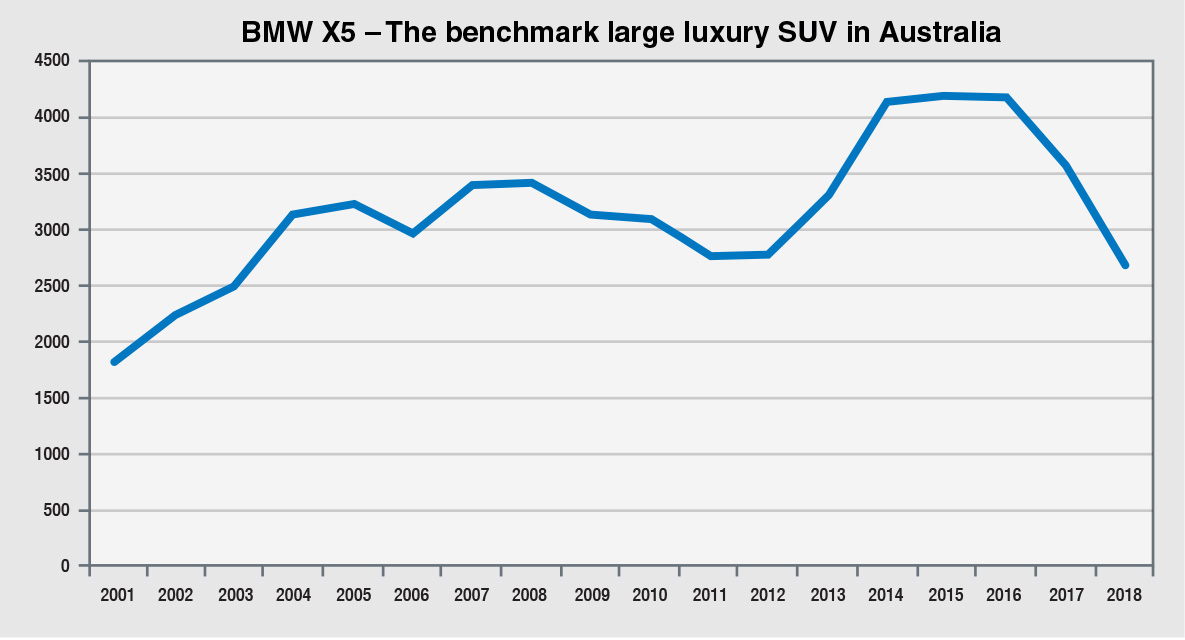










 Read More: Related articles
Read More: Related articles
